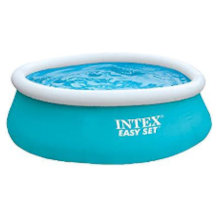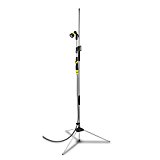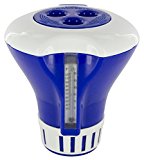Pool pump purchasing advice: how to choose the right product
- What You Need to Know
- Without regular circulation and filtration of the water, algae and harmful germs can form very quickly in the pool water.
- Pool owners cannot do without a reliable pumping system – which model fits best depends on many factors.
- Sand filter systems are recommended for large outdoor pools, smaller pools and indoor pools can also be kept clean and germ-free with cartridge filter systems.
- An important purchase criterion is the circulation capacity of the pool pump – it is measured by the amount of water that can be circulated per hour.
Enjoy the cool water carefree
What could be better than jumping into the pool at home on a hot summer day? No matter whether it’s to cool off, for the kids to splash around in or to stay active in sports: Private swimming pools are becoming increasingly popular. Sooner or later, however, pool owners are faced with the question of how to keep their pool clean most effectively.
On the one hand, dirt, dust, leaves and other impurities continuously fall into the water; on the other hand, the users of the pool also cause pollution, for example with sunscreen. This not only means that the water quickly becomes cloudy and uninviting, but also has a health aspect. Contaminated water is a breeding ground for germs and algae. Therefore, the pool water should be cleaned at least once, but preferably twice, a day if it is used regularly.
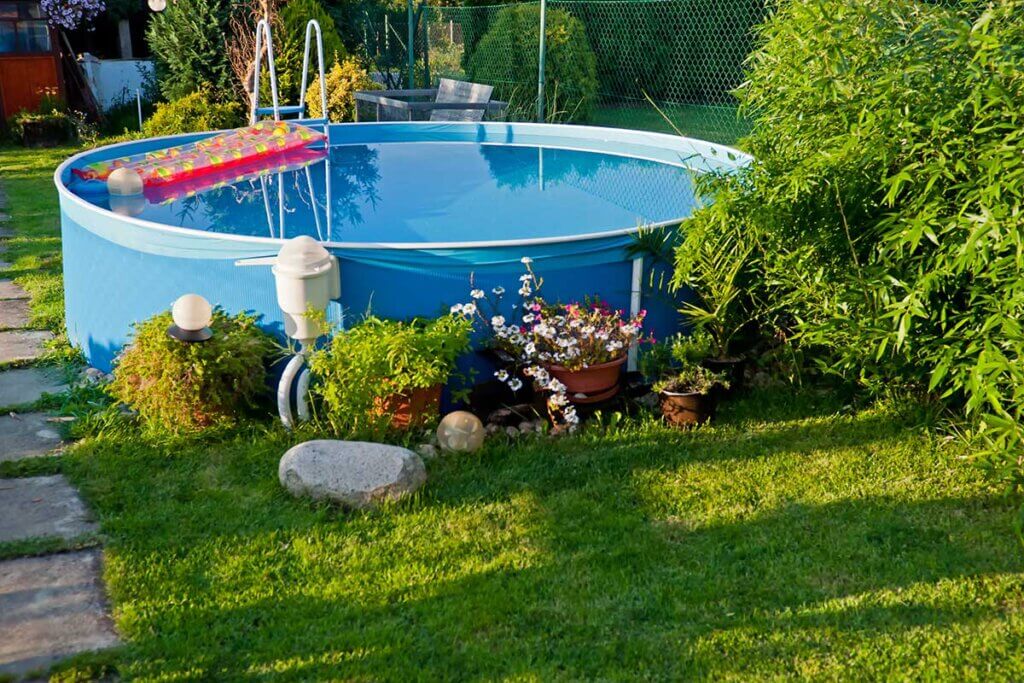
A hygienic pool requires a suitable pool pump. It consists of a circulation pump and a filter system. The pump draws in the surface water in the pool and then passes it through a filter system where it is cleaned. The clean water returns to the pool via inlet nozzles. This process is called “recirculation” and is ideally repeated every few hours so that all the water is regularly and thoroughly cleaned. In addition, the pump distributes chemicals, such as chlorine, evenly throughout the pool to chemically maintain the water.
Attention: “circulate” is not the same as “circulate”!
The term “circulating” is often used in connection with pool pumps – however, this should not be confused with the function of a circulation pump. A circulation pump additionally directs the water through a filter system; this is not the case with circulation.
Important in summer: circulate until sunset
For outdoor pools, you should make sure that the pool pump is in operation until around 8 pm in the evening. The sun’s rays on the water surface break down the chlorine more quickly, so that germs and algae can form very quickly in the upper area.
The filter system: the heart of the pool pump
When choosing the right pool pump, the installed filter system plays a major role. How suitable a filter system is in each case depends on how large the pool is, how it is used and in which environment it is located. In addition, the types of filter differ greatly in their costs.
What types of filters are there?
A basic distinction is made between cartridge filters and sand filters. In larger pools, sand filter systems are preferably used, as they are considered more effective. Quartz sand grains of different sizes reliably filter smaller dirt particles as well as leaves and insects out of the pool water. For indoor pools and smaller paddling pools, on the other hand, cartridge filter systems are a good choice because they are cheaper. Here, the water is passed through a paper cartridge. Both types of filter must be cleaned at least once a week. The systems are flushed with water and the dirt is discharged through a separate channel.
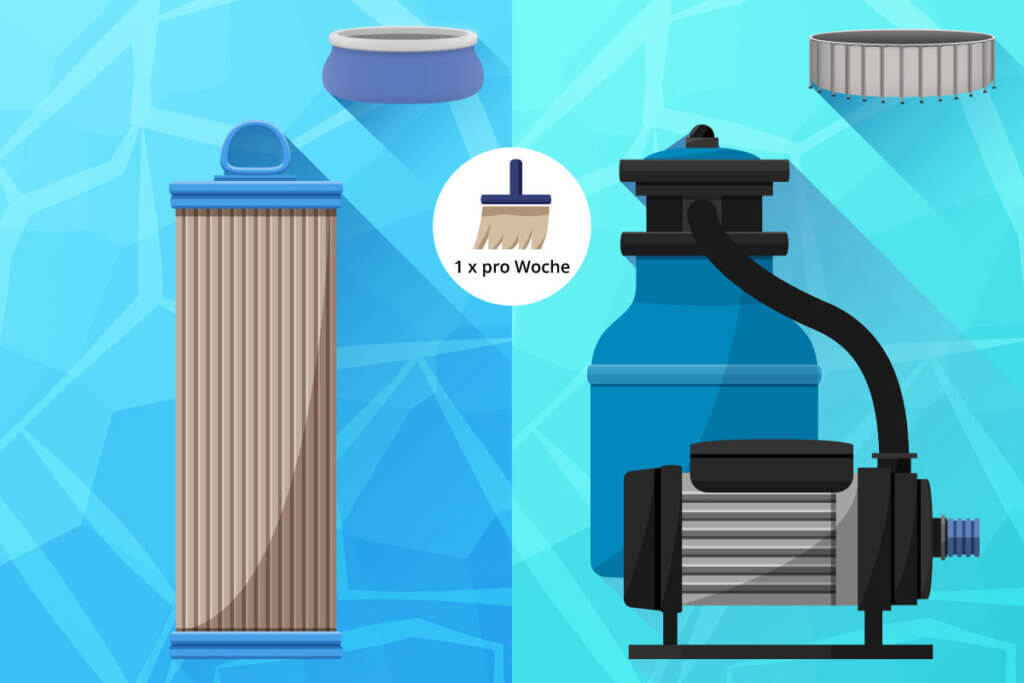
Cartridge and sand filters differ in purchase price and cleaning performance.
Sand filter
Sand filter systems are the most common filter models for pool pumps. The sand used to clean the pool water has a grain size of about 0.5 to 0.8 millimetres and filters suspended particles out of the water. Cleaning the sand filter takes a few minutes and should be done at least once a week. During this process, the dirt particles accumulated during filtration are flushed out of the filter by switching the multi-way valve and discharged into the waste water. This ensures a constant filter performance. On average, a sand filter system runs six to eight hours a day in order to be able to completely circulate the water two to three times a day.
Sand filters clean very effectively and are therefore particularly well suited for outdoor pools, which usually get dirtier and faster than an indoor pool. A practical feature is that you can connect vacuum cleaners or pool robots to a sand filter system.
Sand filters are available from about 100 euros. In addition, there are electricity costs for operating the filter system and the costs for the quartz sand. However, since this only needs to be replaced every one to two years, the running costs are kept within reasonable limits.
Pro points
- Works particularly effectively and reliably
- Filters even larger dirt particles
- Pool vacuum cleaners can be connected directly
Drawbacks
- Comparatively expensive to purchase
Cartridge filter
With a cartridge filter system, the dirt in the water is retained with the help of a paper cartridge. It must be cleaned regularly – either by hosing it down with a garden hose or by replacing the cartridge.
However, the cartridge filter does not filter out all foreign bodies from the water. Heavier dirt particles such as sand or small stones sink down to the bottom of the pool and have to be caught there with a landing net or sucked up with a pool vacuum cleaner. Due to the lower purchase costs, cartridge filter systems are still a good option for indoor pools that are not as dirty and smaller pools. At 25 euros, they cost about a quarter of the price of a sand filter system. However, the cartridges used must be changed regularly, about once or twice a month – one cartridge costs about ten euros.
Pro points
- Cheaper to buy
Drawbacks
- High follow-up costs due to regular cartridge replacement
- Does not filter all dirt out of the water
Important criteria for the purchase decision
In addition to the type of filter system, a number of other criteria play an important role in deciding which pool pump to purchase. They depend primarily on the amount of water that needs to be filtered and cleaned as well as. In addition, the environment in which the pool is located and the way it is used play a role. For a pool pump to work efficiently, its performance must be optimally matched to the size and conditions of the pool.
Self-priming versus normal-priming pump
Self-priming pool pumps can be located above the water surface and suck in the water. All you have to do is fill the pre-filter housing once with water, which serves to cool the pump. The self-priming pump then continuously draws air out of the pre-filter housing, creating a vacuum through which the water is sucked out.
Normal-suction pool pumps, on the other hand, only suck in water, but no air. They must be installed below the water level. The water flows in automatically and the pumps only work when this pumping is undisturbed. Compared to self-priming pool pumps, normal-priming models are more compact and consume less energy.
Circulation capacity and maximum water volume
One of the most important criteria for a pool pump is the amount of water it can circulate per hour. The necessary circulation capacity is determined by the capacity of the pool. For example, if 40 cubic metres of water fit into the pool, the pool pump should have a pumping capacity of ten cubic metres per hour. If the capacity of the pool is 18 cubic metres and the pool pump has a capacity of six cubic metres, all the water will have been circulated once after three hours of operation. According to the guideline that the water should be completely circulated up to three times a day, this results in a running time of up to nine hours a day.
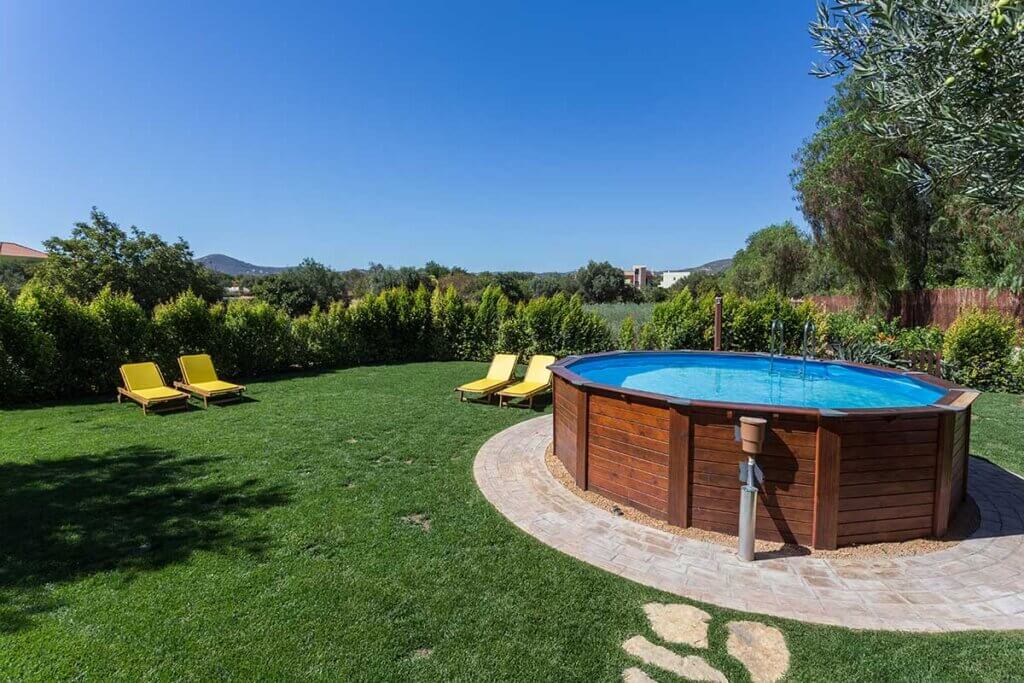
The pump capacity is usually specified in litres or cubic metres per hour. 1,000 litres correspond to one cubic metre of water. In the product description of pool pumps, manufacturers often state for which water quantities the pump capacity is sufficient.
The four-hour rule
If you are wondering what circulation rate is sufficient for your pool, you can use the four-hour rule as a guide: A pool pump should be able to circulate the entire water in the pool once within four hours, ideally three times a day. If in doubt, it is better to choose a pump system that is a little too large than one that is too small.
What does the water column specification mean?
The water column is a measure of the back pressure of the transported water. This varies, for example, due to differences in height or the resistance of the pipelines. The higher the back pressure, the lower the circulation rate. For a better comparison, manufacturers indicate the circulation capacity at six or eight metres water column. One metre of water column corresponds to about 0.1 bar. The amount of water filtered is therefore given in cubic metres per hour at either six or eight metres of water column.
Power
The power of pool pumps is specified in watts and provides information about the consumption and power of the device. The key figure is an indication of how much electricity the pool pump will consume in operation. The larger the amount of water that needs to be circulated, the more energy is needed to clean the water. However, the power of a pool pump does not always indicate its circulation capacity: some devices achieve a very good circulation capacity despite a relatively low power requirement. Most devices have a power consumption of about 400 watts – top models have up to 1,000 watts.
Connection diameter
In order for the pump in the pool to be able to do its job, the connections of the two devices must be compatible with each other. Most pumps have a diameter of 32 or 38 millimetres. Larger pool pump connections measure 55 or 50 millimetres. Some manufacturers offer adapters for their pool pumps that can be used to connect pumps with different diameters.
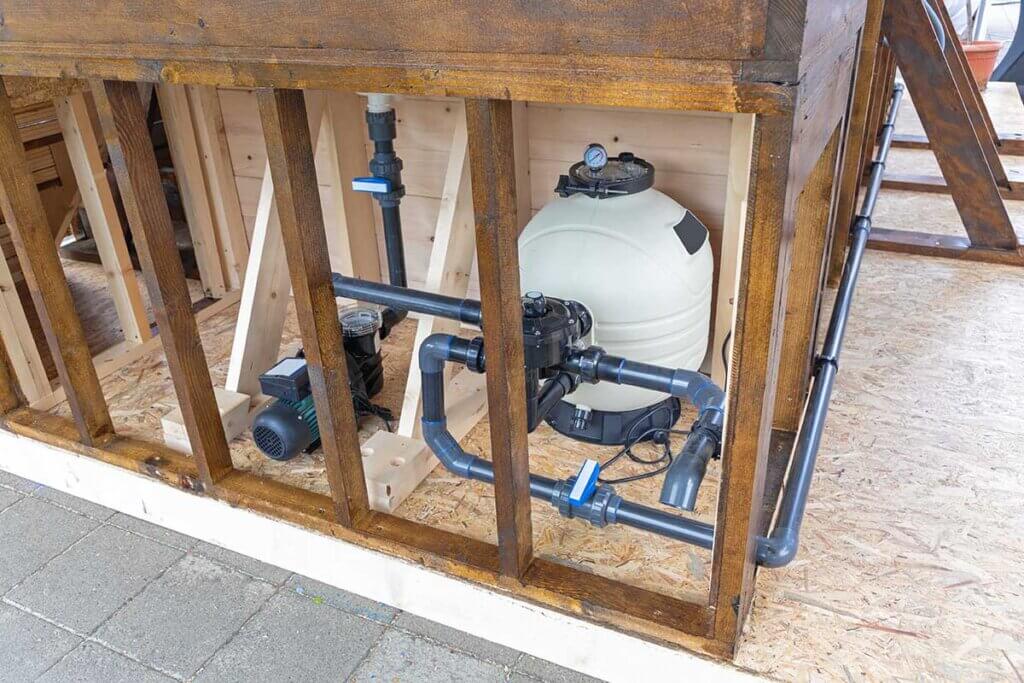
Water temperature
For pool pumps, a maximum water temperature is also specified at which the water can be circulated. This varies from device to device between about 35 and 60 degrees Celsius. If your pool is mostly exposed to the blazing sun on hot days, a pump with a high maximum water temperature is recommended.
Pool heater
Some smaller pool pumps are directly connected to a heater – such combination devices are often used in Jacuzzis – i.e. whirlpools. The water flow with these pool pumps is comparatively weak, so they are more likely to be used for smaller pools. For larger outdoor pools, on the other hand, an external pool heater is recommended. In this case, the circulation capacity is maintained and the heat supply runs independently of the pump. In this way, cleanliness and hygiene are ensured and the water is still pleasantly warm.
Cable length, dimension and weight
The cable length of most devices is about 1.5 to 2.0 metres. The weight of pool pumps and their dimensions vary greatly. On average, the devices weigh between 5 and 15 kilograms and measure between 65 x 60 x 40 and 45 x 25 x 20 centimetres. Some cartridge models with a comparatively low cleaning performance are more compact. Usually, the larger and heavier devices also have a higher flow rate as well as motor and pump power.
Water protection and safety
Pool pumps must meet certain safety criteria that guarantee protection against malfunctions. The so-called protection class provides orientation. A good pool pump should at least bear the IPX 4 seal. This protection class promises protection against splashing water. The IPX 5 label additionally stands for protection against water jets and thus for a higher level of protection. IP stands for “International Protection” and describes the protection of the device against water. It is also important that the components of the pool pump system are resistant to water, chlorine and, if necessary, salt. Otherwise, corrosion damage can quickly occur and impair the safety of the equipment.
In addition to the water protection label, tested devices also have safety seals from TÜV or GS. This ensures consumers that the pool pump meets the corresponding safety standards.
Use of chemicals and correct overwintering
Especially when it comes to the use of chemicals, many consumers are unsure – but with a private pool you cannot avoid this topic, after all, chemicals reliably ensure that neither harmful germs nor unsightly algae form in your pool. For a long service life of the pool pump, you also need to consider a few points during winter storage.
The question of chemical use
Basically, you can do without the use of further chemicals in a private pool – but depending on the use, dirt from the environment and light conditions, they may still be necessary. The most common disinfectant is still chlorine. The ideal concentration is between 1.0 and 3.0 milligrams per litre.
If you do not want to use chlorine, you can use a sand filter to achieve biological filtration with the help of microbial coatings on the sand grains. However, the prerequisites for this are a pH value that is as neutral as possible between 6.8 and 7.4 as well as a sufficient circulation capacity of the pump.
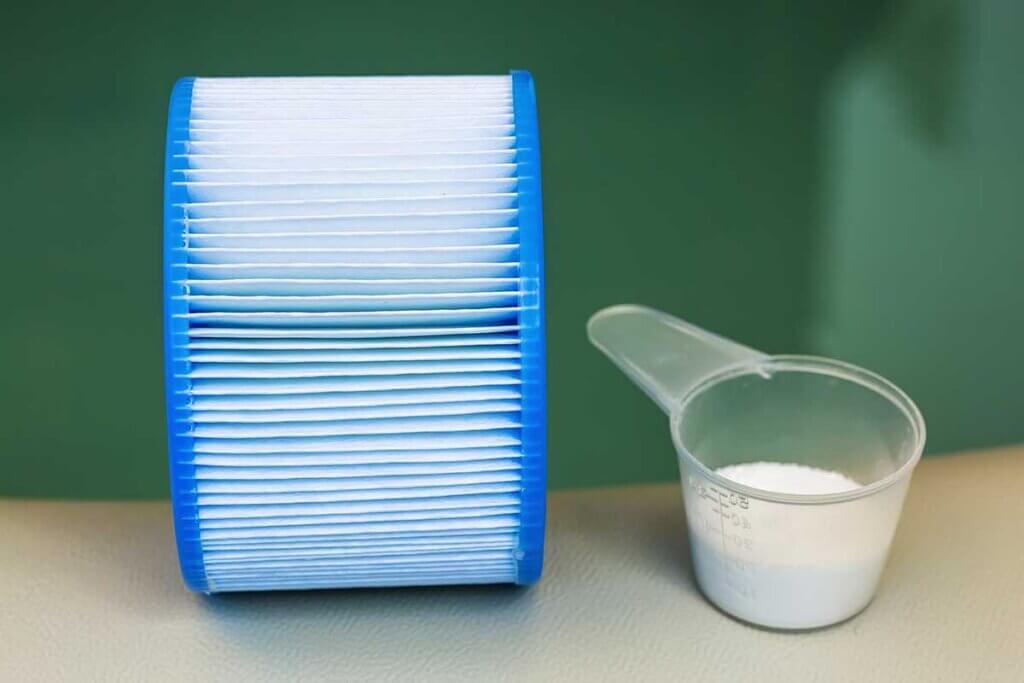
What does it mean when the pool smells of chlorine?
In fact, the disinfectant chlorine in bathing water is completely odourless. The typical chlorine smell that we know from the indoor swimming pool comes from combined chlorine, the chloramines. They form from the chlorine dissolved in the bathing water in combination with nitrogenous compounds such as urea, creatinine or amino acids. In a typical indoor pool, about 95 per cent of the urea content comes from the urine of the bathers. For comparison, one person urinating releases as much urea into the water as 40 people do through their skin alone. However, the urea that enters the water through the skin can be significantly reduced – by up to 97 percent – by showering beforehand.
How do I store the pool filter over the winter?
For winter storage of the pool pump, you must first completely empty the sand filter system. This prevents frost damage. In addition to draining, it is important to clean the pump to remove germs and dirt residues. Afterwards, all components must dry completely in a shady place before they can be stored over the winter. If your pool pump has a pressure gauge, it is advisable to pack and store it separately. This will prevent it from getting lost or damaged.


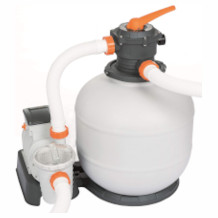
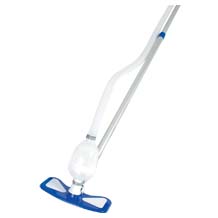
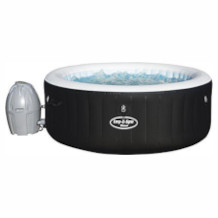
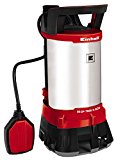
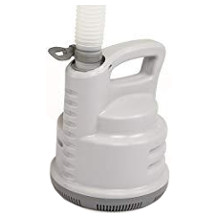
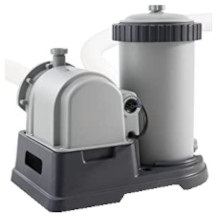
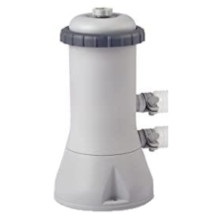
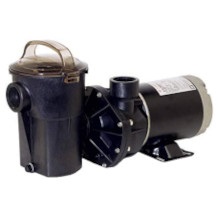
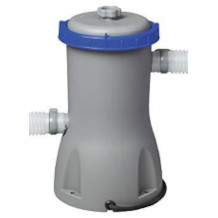

 7,593 reviews
7,593 reviews

